Practice provides provides a range of environmental benefits
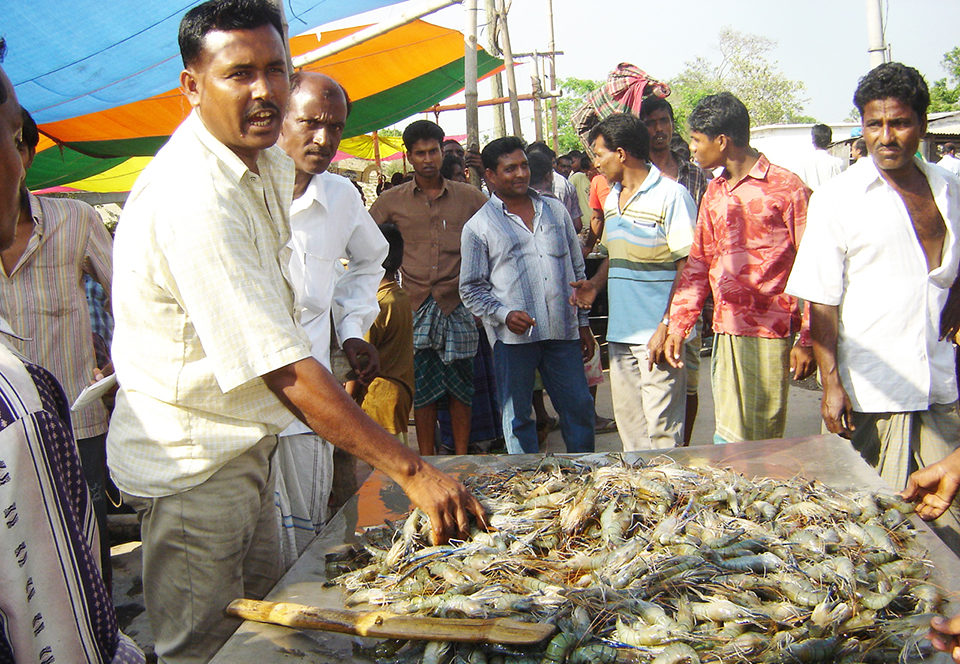
Bangladesh is considered one of the most suitable countries in the world for farming freshwater prawns, Macrobrachium rosenbergii, because of its favorable resources and climatic conditions. Within the overall agro-based economy in Bangladesh, M. rosenbergii farming is currently one of the most important sectors. In 2008, Bangladesh exported 49,317 mt of prawns and shrimp valued at U.S. $445 million, of which 30 percent was contributed by prawns.
The total area under prawn cultivation in Bangladesh is estimated to be around 60,000 ha. About 600,000 people are directly involved in prawn farming and marketing activities, including 120,000 farmers and 200,000 farm laborers. Most prawn farms are located in southwest Bangladesh in mainly the Bagerhat, Khulna and Satkhira districts.
The practice of small-scale prawn farming in rice fields locally known as “gher” is widespread in the region due to the availability of wild postlarvae, low-lying rice fields, a warm climate, fertile soil, and cheap and abundant labor.
Although this type of farming remains rather marginal in other parts of the country, the combination of high prices for prawns in the international market, and rice and fish for household consumption and local markets, has led increasing numbers of farmers to convert their rice fields to prawn farms in Bangladesh.
Field assessment
A field survey was conducted by the author in 2009 to assess potential benefits from integrated prawn-fish-rice farming in the Bagerhat area of Bangladesh as part of the University Grants Commission research project.
Data were collected through hour-long focus group discussions with prawn farmers and associated groups, such as postlarvae collectors, fry traders, prawn traders and day laborers, including women. Sessions were held in front of village shops, under large trees, in farmers’ houses and in markets – where participants could sit, feel comfortable and easily be observed.
A total of 172 people were surveyed during the 20 focus sessions. Their responses provided an overview of prawn-farming practices, socioeconomic benefits and environmental conditions in the area. To validate the collected information, cross-check interviews were conducted with 32 informants, including school teachers, local leaders, fisheries officers, researchers, policymakers, non-governmental organization workers and project staff.
Integrated prawn farming
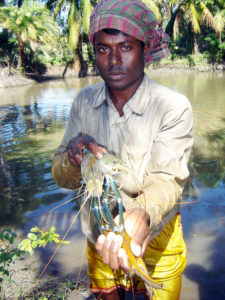
Based on the survey results, most farmers in the Bagerhat district practiced prawn farming in rice fields, with primary dependence on prawns, fish, rice and dike crops including vegetables and fruits. Two types of prawn-farming systems were used in the rice fields, depending on the ecological and technological arrangements: integrated and alternate.
While most farmers cultivated the monsoon season aman rice with prawns from June to October, 15 percent avoided the monsoon rice because they believed the use of pesticides for rice negatively affected prawn growth. This approach is now growing in Bangladesh, partly as a result of the promotion of integrated pest management.
Although integrated prawn-fish-rice farming is still extensive, about 20 percent of farmers practiced improved methods where prawns were cultivated semi-intensively. The average farm size was estimated as 0.28 ha.
The peak season of prawn farming in rice fields was from May to January. Prawn postlarvae were stocked in May or June and harvested from November to January in a culture period of six to nine months. A range of Indian major carps and exotic carps were commonly cultured with prawns in the rice fields.
A variety of feeds was used, but the preferred feed was the freshwater snail, Pila globosa. Since the supply of snails is not regular, farmers also sometimes used commercial feed pellets or prepared homemade diets by mixing cooked rice, rice bran, oilcake and fishmeal. Farmers also used cow dung as fertilizer for integrated prawn farming. Only a few (25 percent) better-off farmers used a mixture of chemical fertilizers including urea and triple super phosphate together with cow dung at varying rates (Table 1).
Ahmed, Inputs and outputs of integrated prawn-fish-rice, Table 1
| Average | Range | |
|---|---|---|
| Stocking (quantity/ha/year) | ||
| Prawn postlarvae | 20,600 | 10,000-30,000 |
| Fish fingerlings | 2,425 | 2,000-5,000 |
| Feed (kg/ha/year) | ||
| Snail meat | 4,050 | 2,750-5,560 |
| Homemade feed | 1,200 | 800-2,000 |
| Fertilization (kg/ha/year) | ||
| Cow dung | 1,450 | 500-1,800 |
| Urea | 450 | 150-720 |
| Triple super phosphate | 220 | 80-360 |
| Productivity (kg/ha/year) | ||
| Prawns | 425 | 250-750 |
| Fish | 650 | 400-1,250 |
| Rice | 2,510 | 1,500-4,100 |
The average annual yields of prawns, fish and rice were estimated at 425, 650 and 2,510 kg/ha, respectively (Table 1). A number of interdependent factors affected the growth rate and productivity of prawns and fish in the rice fields, including farm size, availability and quality of water, seed and feed inputs, spacing of rice plants and other aspects of farm management. Measures of rice productivity included the area of canal and water for prawn farming, so actual yields were likely 25 percent higher.
Socioeconomic benefits
Integrated prawn-fish-rice farming has significantly increased farmers’ incomes. The positive socioeconomic impacts are quite profound in prawn-farming communities due to increased income and livelihood opportunities. As an export product, prawns have infused unprecedented amounts of cash into the local economy.
Overall, the supply of prawns, fish, rice, vegetables and fruits has generated a number of employment opportunities, including wild postlarvae fishing, fry trading, snail harvesting, snail trading, feed trading, prawn marketing, transporting and day laboring. The opportunities for day laborers including women have also increased significantly, as labor is required for prawn harvesting, marketing and processing.
Integrated prawn-fish-rice farming has substantially improved farmers’ food consumption. Households of farmers are able to eat rice three times a day and also eat better-quality food. The consumption of fish has also increased notably over recent years. Vegetables and fruits are now more abundant and also cheaper due to the production of dike crops using farm water and fertile soil.
Increases in rice production have increased the availability of paddy straw, which is used for house-building materials, cooking fuel and fodder for cattle. As a result of fodder availability, milk and cow dung are available and cheap in prawn-farming communities. Cow dung is used for cooking fuel and fertilizer, while the milk is regarded as suitable food for children.
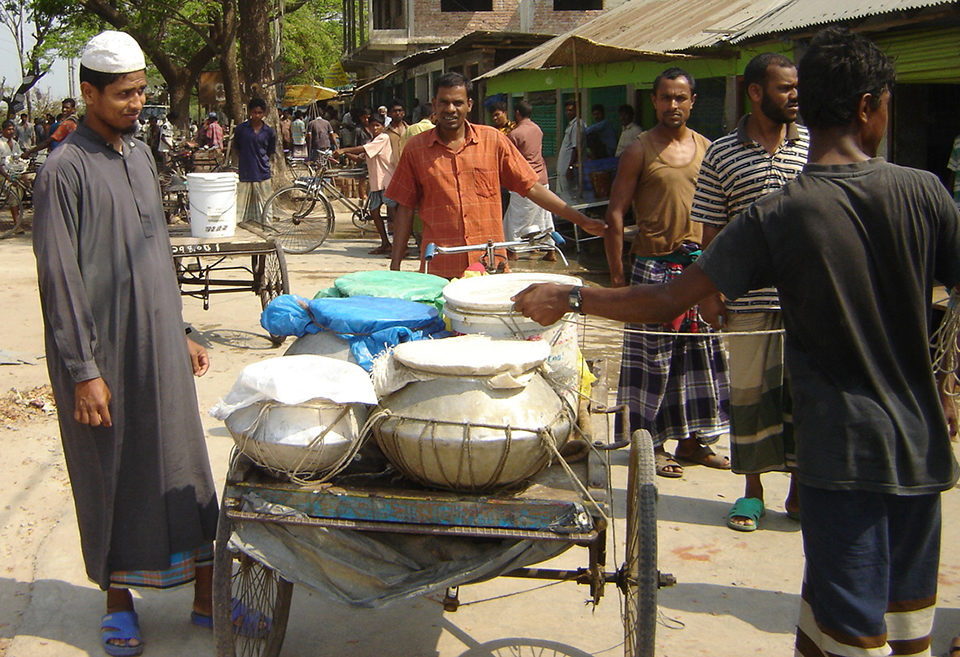
Environmental benefits
The practice of prawn and fish farming in rice fields is a form of integrated aquaculture-agriculture (IAA) that provides a range of environmental benefits. Ideally, the integrated culture results in increased diversification, intensification, improved natural resource efficiency, increased productivity and sustainability. IAA is particularly appropriate for resource-poor farmers by maximizing benefits from their labor.
In a country like Bangladesh, where land is scarce and the population is growing rapidly, IAA makes the most of scarce resources, particularly since there are often synergistic benefits among the different enterprises. Integrated prawn-fish-rice farming is considered highly efficient in terms of resource utilization through the complementary use of land and water.
According to the farmers, rice production has increased 8 to 10 percent by the presence of prawns and fish. Because of the fertilizing effect from the prawn and fish droppings, nutrient availability greatly increases for the rice crop. Fish also play a significant role in controlling aquatic weeds, which can help reduce competition for nutrients and thereby increase the growth of rice plants. Insects and pests are also consumed by the prawns and fish.
Prawn and fish culture appears to stimulate increased yields due to the complementary utilization of trophic niches in the rice field, because it offers planktonic, periphytic and benthic food. Integrated prawn-fish-rice farming is therefore recognized as very ecofriendly.
Sustainability
While there is great potential for integrated prawn-fish-rice farming, a number of challenges were identified, including high production costs, inadequate supply of prawn fry and climate change (floods, droughts and cyclones). It is therefore worthwhile to find means of providing institutional and organizational support, training facilities and extension services for sustainable prawn-fish-rice farming.
It seems that the benefits of integrated prawn farming technology accumulate to better-off farmers unless institutional and organizational support is provided to resource-poor farmers. A positive government policy can also help to promote integrated prawn farming throughout the country.
(Editor’s Note: This article was originally published in the March/April 2010 print edition of the Global Aquaculture Advocate.)
Author
-
Nesar Ahmed, Ph.D.
Department of Fisheries Management
Bangladesh Agricultural University
Mymensingh 2202, Bangladesh[109,111,99,46,111,111,104,97,121,64,48,48,48,50,95,114,97,115,101,110]
Tagged With
Related Posts

Responsibility
A look at integrated multi-trophic aquaculture
In integrated multi-trophic aquaculture, farmers combine the cultivation of fed species such as finfish or shrimp with extractive seaweeds, aquatic plants and shellfish and other invertebrates that recapture organic and inorganic particulate nutrients for their growth.

Health & Welfare
A holistic management approach to EMS
Early Mortality Syndrome has devastated farmed shrimp in Asia and Latin America. With better understanding of the pathogen and the development and improvement of novel strategies, shrimp farmers are now able to better manage the disease.
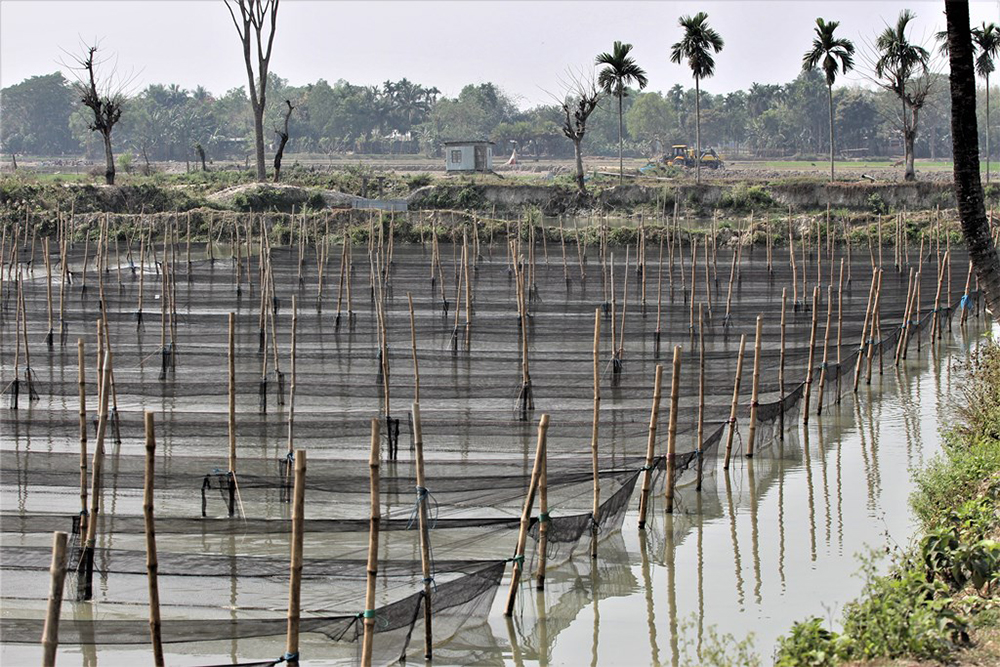
Intelligence
Bangladesh’s tilapia aquaculture industry shows resilience
Tilapia aquaculture in Bangladesh has developed significantly since 1999, based on the Genetically Improved Farmed Tilapia (GIFT) strain of Nile tilapia (Oreochromis niloticus) introduced from Malaysia and on the significant genetic improvement research work by the Bangladesh Fisheries Research Institute (BFRI).
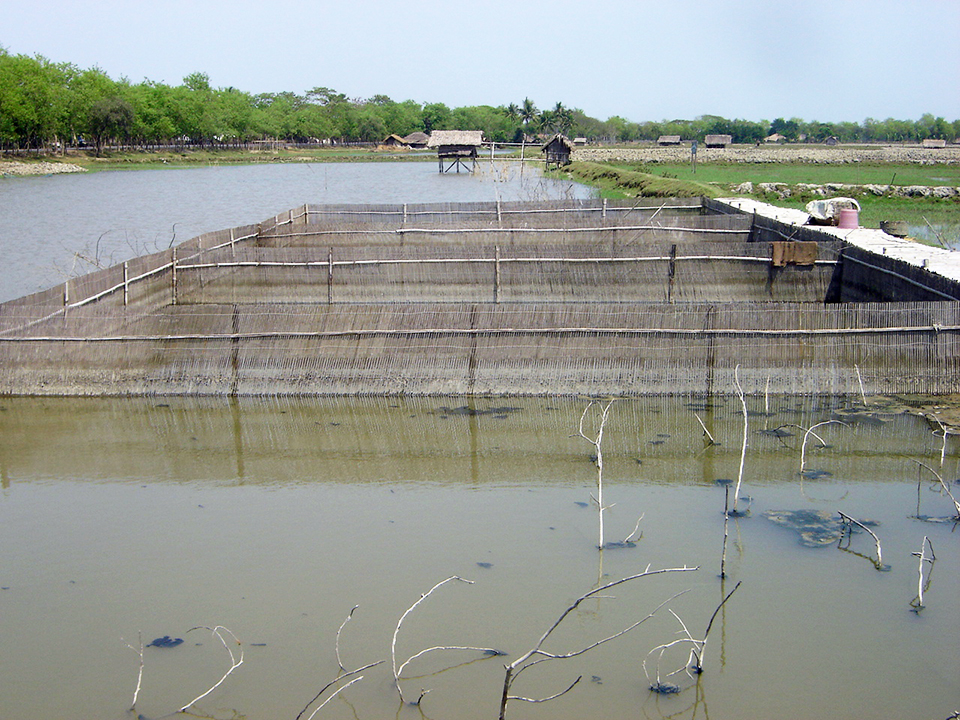
Responsibility
Coastal aquaculture in Bangladesh must adapt to climate change
Shrimp culture in coastal Bangladesh is threatened by climate change variables that include flooding, cyclones, drought, salinity changes and rising sea levels. Holistic planning can help reduce the impacts.


